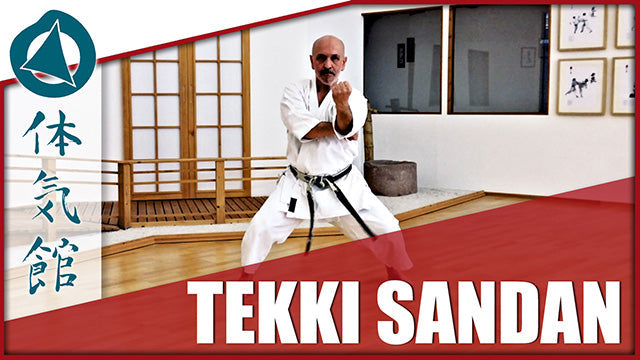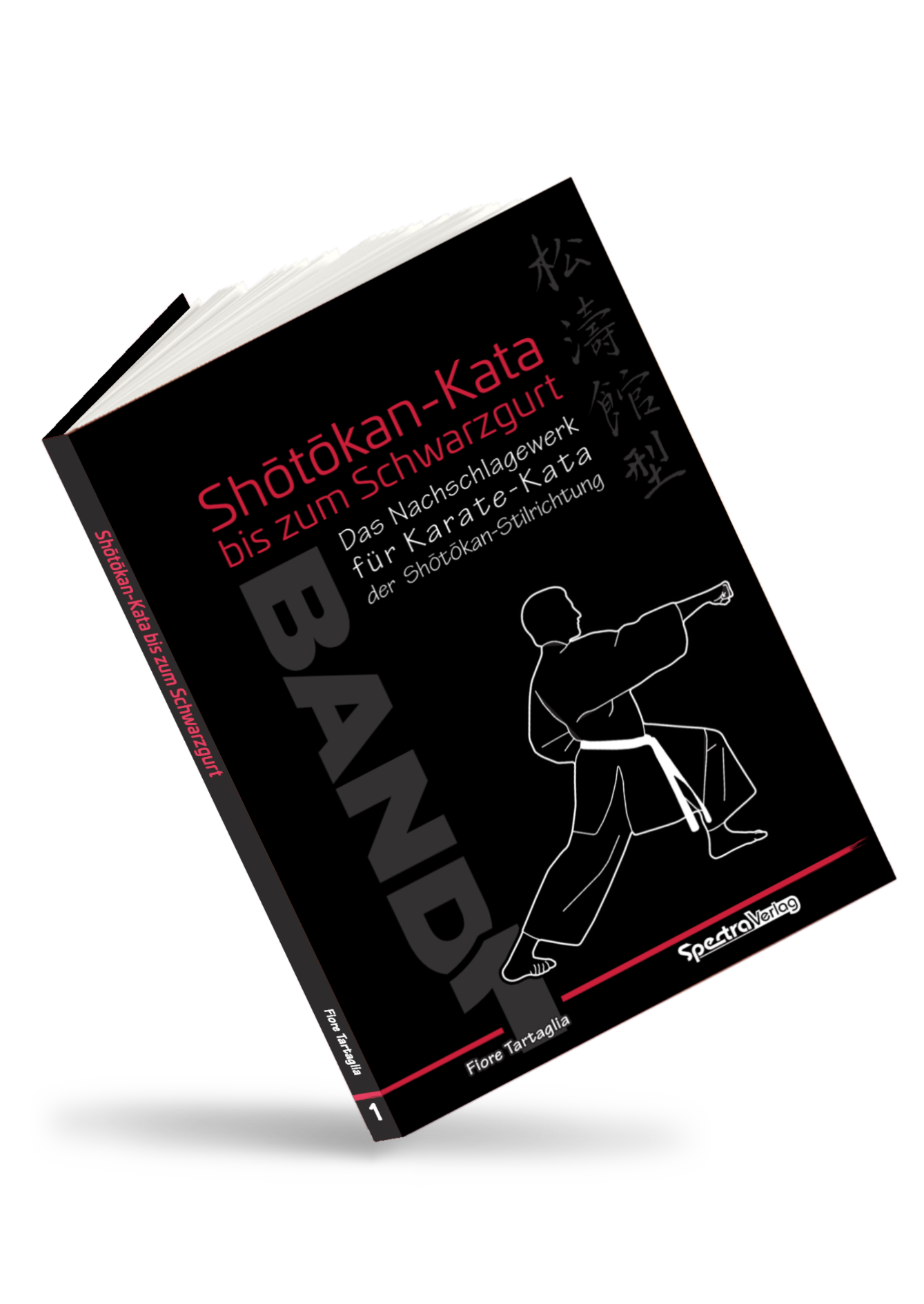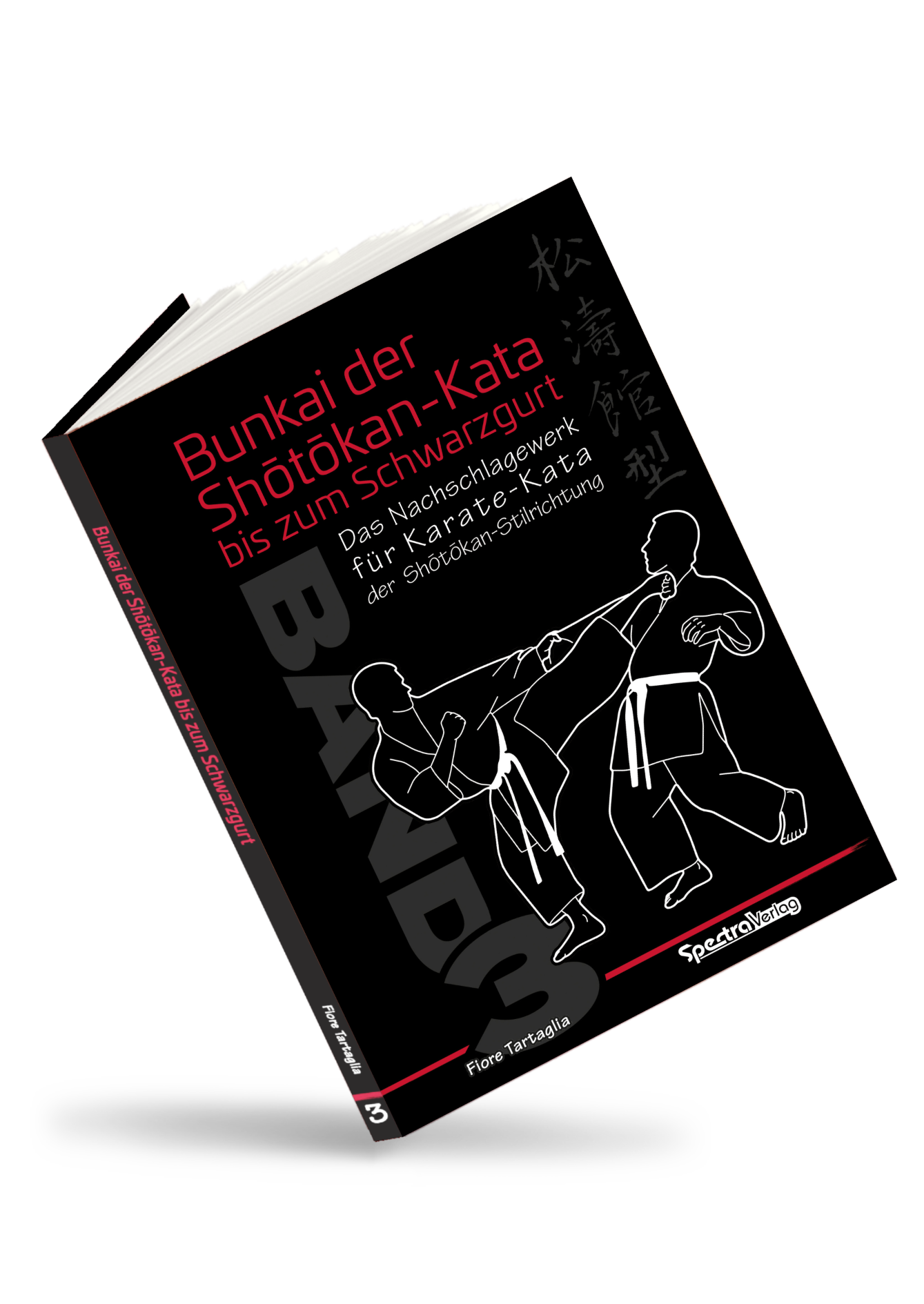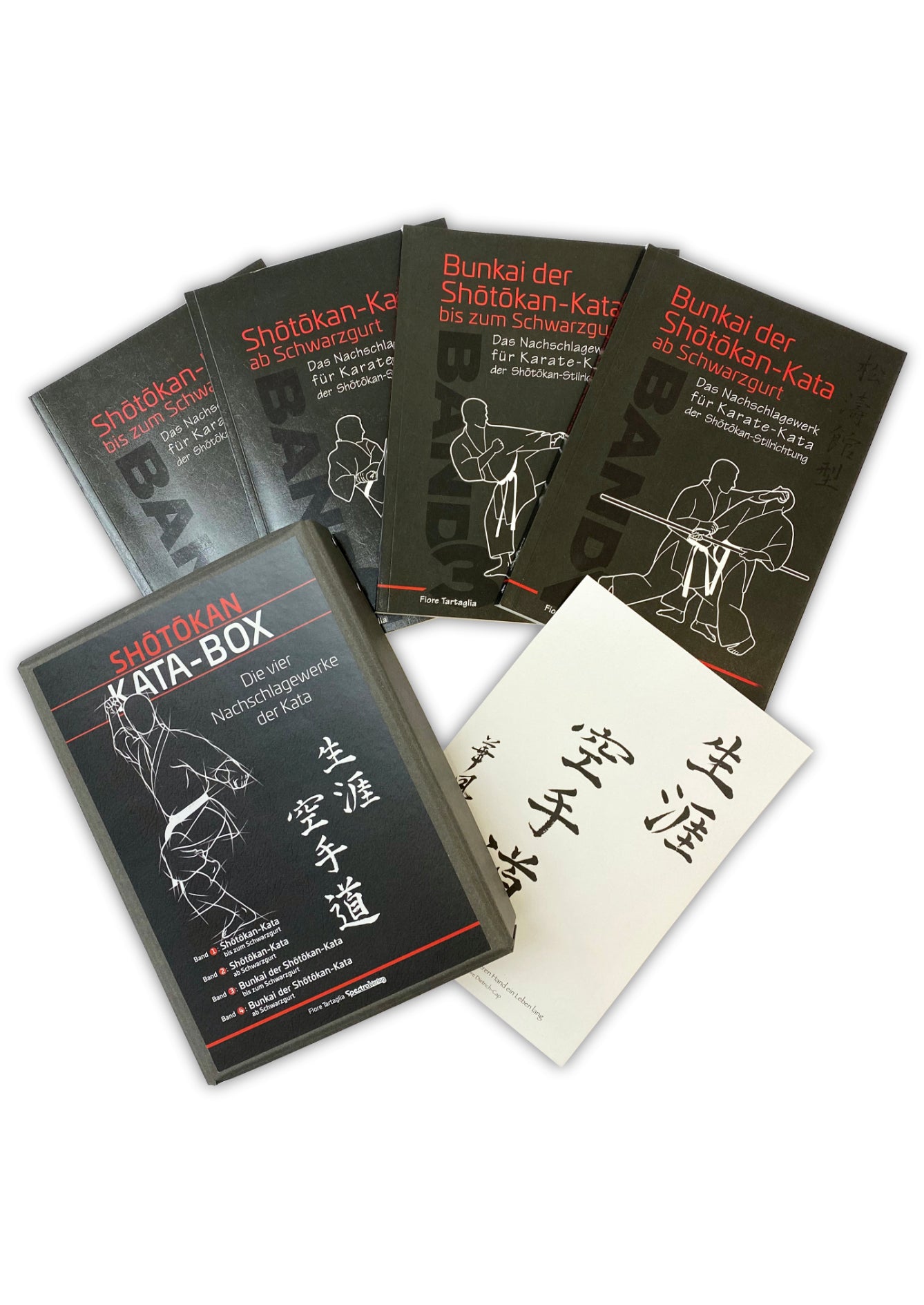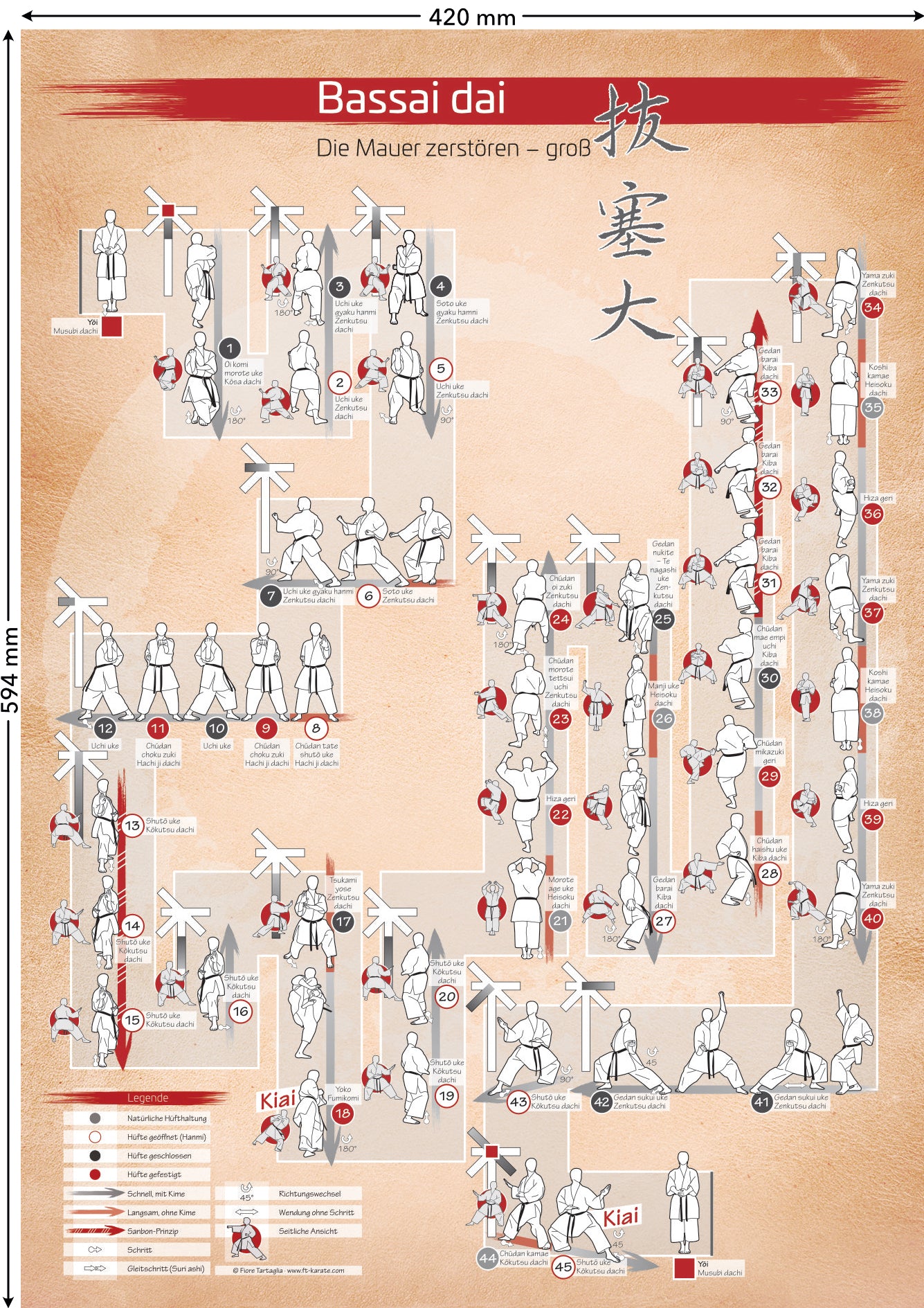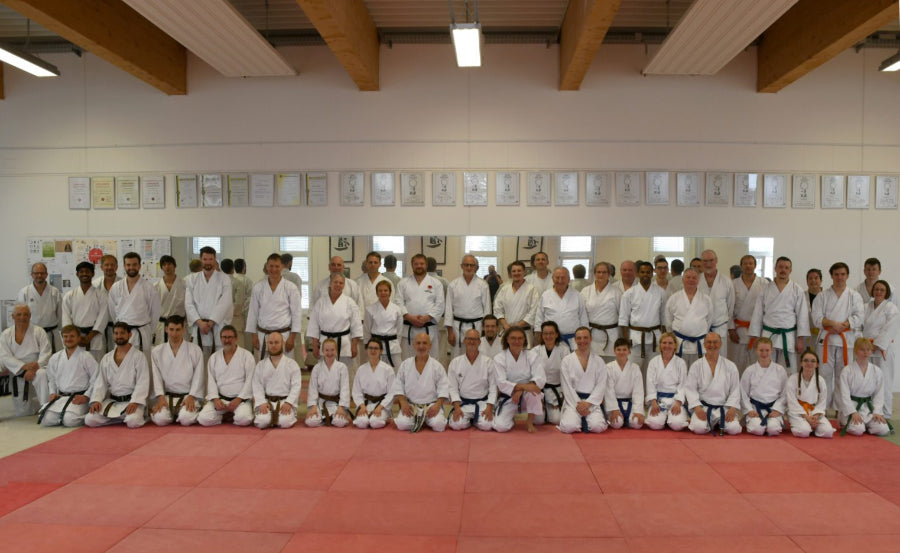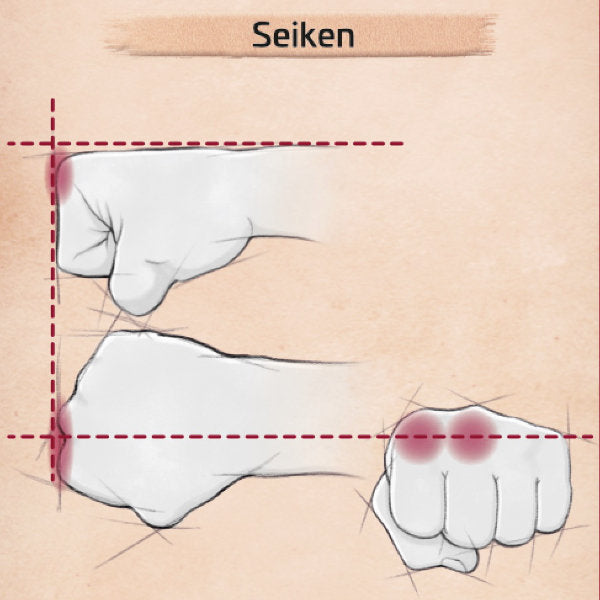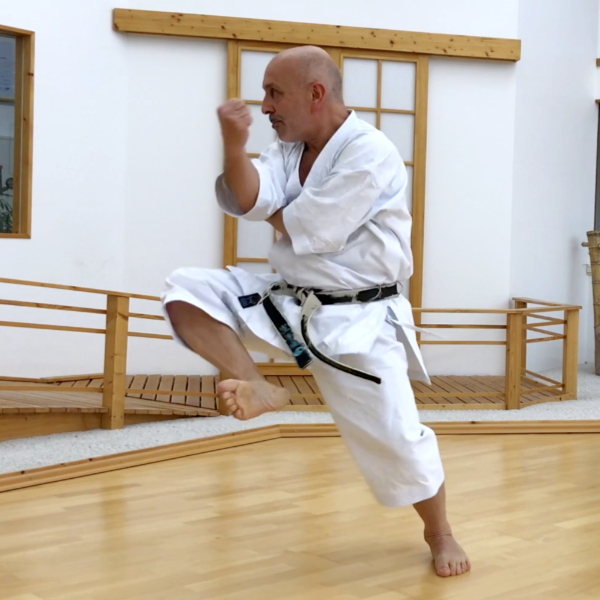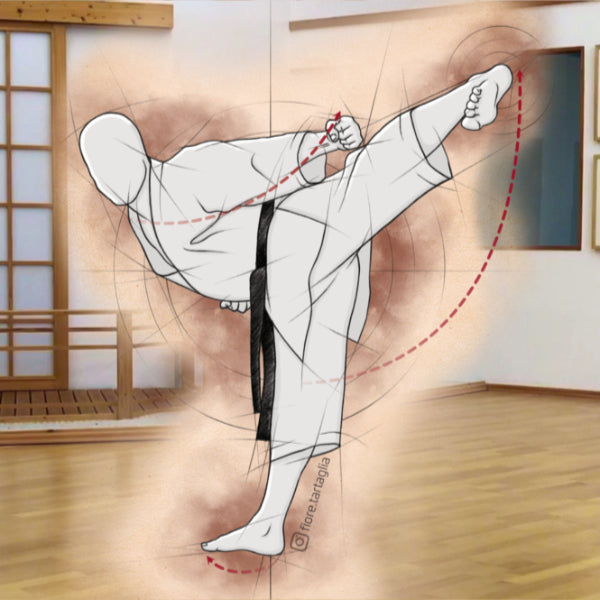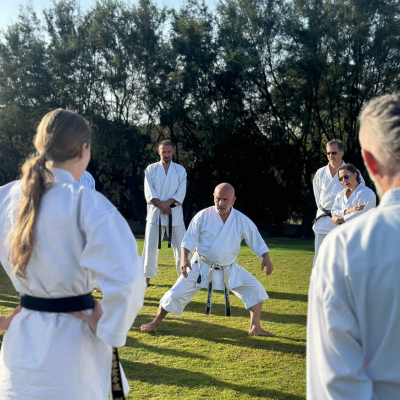BASSAI DAI – DESTROY THE WALL, BIG.
The yōi in Bassai dai is performed in heisoku dachi. The right hand, clenched into a fist, is wrapped in the left. This hand position also appears in other kata and symbolizes the victory of flexibility (open left hand – weak side) over strength (right hand clenched into a fist – strong side). This principle can be understood in Bassai dai as follows: Following the basic techniques in the basic kata, new solutions are sought to defeat the attacker.
The name of this kata, "destroying the wall" (or "storming the fortress"), already indicates its nature: Bassai dai is characterized by very powerful techniques. The penetration - Oi komi - of the opponent's guard is already evident in the first technique. One possible interpretation is the defense in Kōsa dachi (not a particularly stable position like Zenkutsu dachi, for example), which simultaneously throws the opponent off balance while they carry out their attack. Powerful defense techniques are used to emphasize, among other things, that a strong blocking technique can demotivate the opponent. For this reason, various combinations deliberately end with a defense technique.
Tsukami yose and fumikomi are typical of Bassai. The key to this combination are the opposing movements (compact body position when grabbing to prepare for a counterattack, stretched out when countering), which enable maximum kime. The following should be observed regarding hand position: The flat left hand touches the right forearm with only three fingers: thumb, index finger, and middle finger.
In the two Heisoku dachi, towards the end of the kata, the body posture is directed frontally toward the opponent. Alternatively, the stance and the corresponding body posture can be held at a 45° angle, so that only the gaze is directed toward the opponent. In the techniques used here – Hiza geri – the kata is also practiced with Mikazuki geri at these two points.
With the two Gedan sukui uke, care should be taken to ensure that, despite large circular arm movements (the defensive technique strikes from above), the center of gravity remains consistently low to maintain the stability required to successfully parry a potential mae geri from the opponent (to name one possible interpretation of the application) and break their balance. Another interpretation could be to parry with Gedan kake uke and counter with uraken or tettsui uchi. Furthermore, a mae geri (Gedan nagashi uke) could be parried first, followed by a zuki (uchi uke), with the counter technique then following.
Duration: approximately 80 seconds
